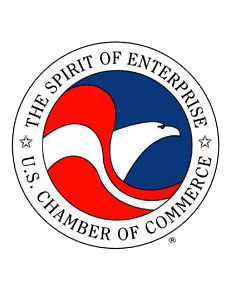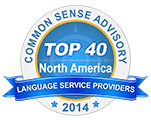Many federal laws have been enacted to require greater access to telecommunications. There is only one problem – the federal laws that we worked so hard to enact over the past 20 years have not kept pace with many new technologies. For instance, television shows that are re-shown over the Internet are under no requirement to be captioned – even if they had captions when they were shown on TV! Also, small TVs, cell phones, PDAs, and other mobile devices are not required to display captions, even though they are now capable of showing TV shows. Also, for now, 9-1-1 emergency call centers cannot accept calls from people who need to communicate in video or via pagers.
During the spring of 2007, a new coalition, the Coalition of Organizations for Accessible Technology (COAT), was established to try to fix these problems. Founding organizations include Communication Service for the Deaf (CSD), the National Association of the Deaf (NAD), the American Association of People with Disabilities (AAPD), and the American Foundation for the Blind (AFB). As of April 10, 2009, over 230 national, regional, state or local organizations are members of the COAT.
• COAT’s primary goal is to ensure that legislative and regulatory safeguards are in place so people with disabilities have access to evolving high speed broadband, wireless, and other Internet-based technologies.
COAT has identified two main areas for advocacy: Communication Access and Video Programming Access. COAT is therefore targeting the Communications Act for some updates. Here are some of the things that COAT is trying to achieve in each of these areas.
Communication Access
1. Extend Hearing Aid Compatibility mandates to Internet-enabled voice telephone products. Federal law requires all wired and many wireless telephones to be hearing aid compatible. COAT wants to make sure that new Internet-enabled phones are covered by these mandates.
2. Extend Telephone Relay Service (TRS) obligations to Internet-based providers. Thanks to COAT’s advocacy, the FCC issued a June 2007 order to require that that providers of certain Internet-based voice communication services contribute to the TRS interstate fund and to fulfill other TRS obligations, just like telephone companies do. Now, COAT is requesting Congress to similarly extend this requirement to all Internet-based providers that provide voice communication services.
3. Ensure Internet-based communication products and services are accessible. All telecommunications manufacturers and service providers are required by law to make their products and services accessible to people with disabilities, if “readily achievable.” In June 2007, COAT succeeded in getting an order from the FCC to mandate the same requirements for certain Internet-based providers of voice communication services. COAT is now requesting Congress to similarly extend this requirement to all Internet-based providers.
4. Ensure 9-1-1 calls can be made through the Internet and video communications. 9-1-1 emergency call centers should be compatible not only with direct voice and TTY calls, but also with Internet and video communications. COAT requests that people have equal access to 9-1-1 emergency call centers through voice, text, the Internet, video, and any other new technologies.
5. Allow the Universal Service Fund (USF) to cover broadband. There are two federal programs that help low income consumers pay for telephone services and expenses: Lifeline and Link-Up. But currently, these programs do not provide any funds for broadband services which are needed for videophone communication. Low income individuals should be allowed to use these programs to help fund the costs of their high speed broadband connections if they need those connections to make video calls. COAT advocates for modifying USF requirements to allow eligible low-income consumers to apply their Lifeline and Link-Up subsidies to broadband services.
6. Allow the USF to cover specialized equipment for deaf-blind consumers. Although the USF helps to lower the cost of telephone services, USF has never been available to help consumers purchase specialized equipment. COAT advocates to allow eligible deaf-blind consumers to use USF funds to purchase specialized equipment to meet their unique telecommunications needs.
Video Programming Access
1. Extend the Television Decoder Circuitry Act of 1990 (Decoder Act) to video devices of all sizes. First, this law requires televisions to have built-in decoder circuitry for closed captioning capacity, but only for those television screens that are at least 13 inches. Today, screens much smaller than 13 inches can and should display captions. COAT is pushing to have the 13 inches minimum requirement eliminated, so televisions with screens of any size will be required to be capable of displaying captions. Second, some playback and real-time recording devices, such as digital DVD players and Blu-Ray DVD players, may not be capable of decoding and displaying captions. Therefore, COAT advocates for expanding the scope of the Decoder Act to video programming devices of all sizes, including recording and playback devices that are designed to receive or display analog, digital, or Internet-based video programming.
2. Extend federal closed captioning obligations to certain Internet-based video programming. Closed captions are legally required for 100% of new, non-exempt, English television programs, some Spanish language programming, and some older television programs. Now, the Internet has many television programs, movies, video clips, and live video streaming, and the majority of this programming is not captioned because there’s no legal requirement for Internet-based videos. COAT advocates for Congress to mandate closed captioning obligations for certain video programming broadcasted on the Internet.
3. Restore the FCC’s video description rules. Video description allows video programming to be accessible to blind people. Video description describes on-screen visual elements during natural pauses in dialogue. The FCC had mandated some video description, but in 2002, a federal court said that the FCC did not have the authority to issue these rules, and threw them out. COAT advocates for restoring the FCC’s video description rules, in order to ensure access by blind and visually impaired people to television programming, including on-screen emergency warnings and information.
4. Require accessible user interfaces and easy access to accessibility features on all video programming devices. How many times have you tried to figure out how to turn on closed captions on a new or different television set and not been able to do so? It is often difficult or impossible to find the menu selections that turn on accessibility features, such as closed captions or video description. Therefore, COAT advocates for requiring easy ways to find and turn on accessibility features on all devices used to receive or display video programming. For example, COAT is asking for buttons to be put on televisions, other video display devices, and remote controls to turn on the closed captions.
Learn More
COAT is working with Congress to develop new legislation to include these needed changes to existing law. COAT also works to change federal regulations, such as at the Federal Communications Commission (FCC), to achieve our goals. For more information about COAT and these proposals, and to get your group involved with the COAT, please visit the COAT website at www.COATaccess.org.








